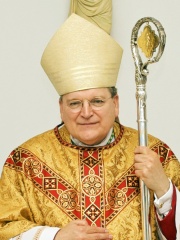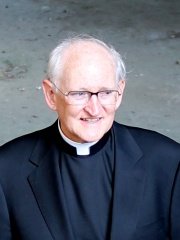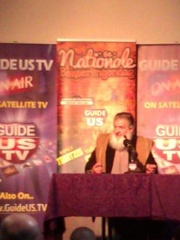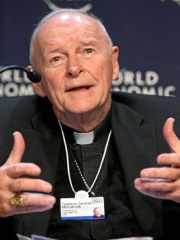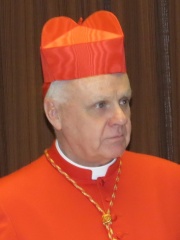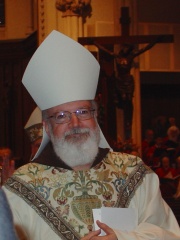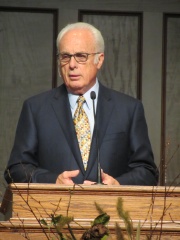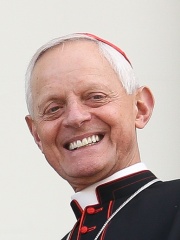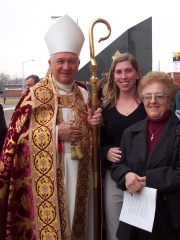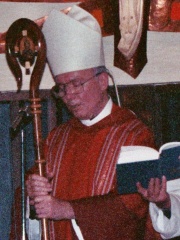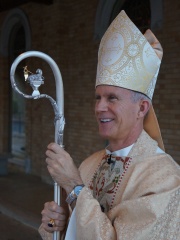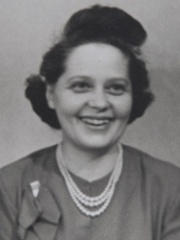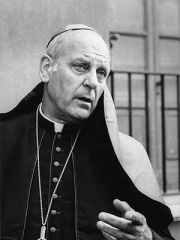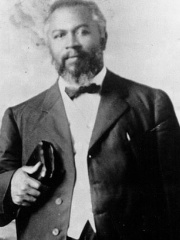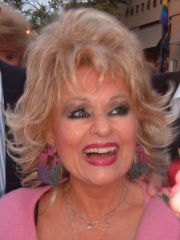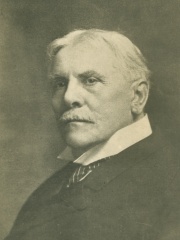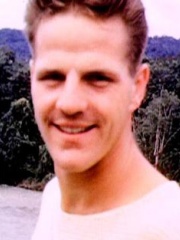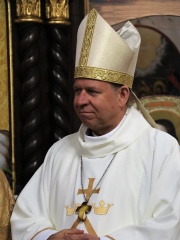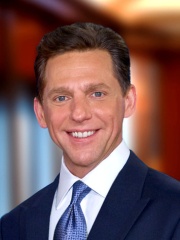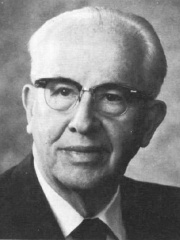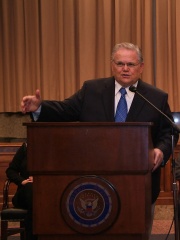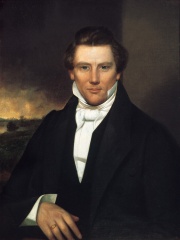

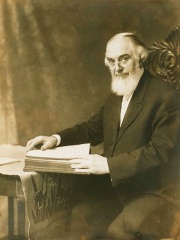
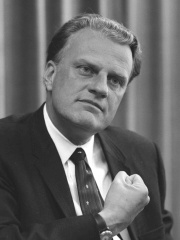
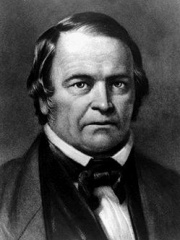
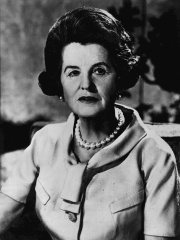

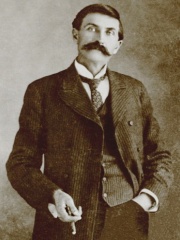
The Most Famous
RELIGIOUS FIGURES from United States
This page contains a list of the greatest American Religious Figures. The pantheon dataset contains 3,187 Religious Figures, 106 of which were born in United States. This makes United States the birth place of the 6th most number of Religious Figures behind United Kingdom, and Germany.
Top 10
The following people are considered by Pantheon to be the top 10 most legendary American Religious Figures of all time. This list of famous American Religious Figures is sorted by HPI (Historical Popularity Index), a metric that aggregates information on a biography’s online popularity. Visit the rankings page to view the entire list of American Religious Figures.

1. Joseph Smith (1805 - 1844)
With an HPI of 79.04, Joseph Smith is the most famous American Religious Figure. His biography has been translated into 94 different languages on wikipedia.
Joseph Smith Jr. (December 23, 1805 – June 27, 1844) was an American religious leader and the founder of Mormonism and the Latter Day Saint movement. Publishing the Book of Mormon at the age of 24, Smith attracted tens of thousands of followers by the time of his death fourteen years later. The religion he founded is followed to the present day by millions of global adherents and several churches, the largest of which is the Church of Jesus Christ of Latter-day Saints (LDS Church). Born in Sharon, Vermont, Smith moved with his family to Western New York, following a series of crop failures in 1816. Living in an area of intense religious revivalism during the Second Great Awakening, Smith reported experiencing a series of visions. The first of these was in 1820, when he saw "two personages" (whom he eventually described as God the Father and Jesus Christ). In 1823, he said he was visited by an angel who directed him to a buried book of golden plates inscribed with a Judeo-Christian history of an ancient American civilization. In 1830, Smith published the Book of Mormon, which he described as an English translation of those plates. The same year he organized the Church of Christ, calling it a restoration of the early Christian Church. Members of the church were later called "Latter Day Saints" or "Mormons". In 1831, Smith and his followers moved west, planning to build a communal Zion in the American heartland. They first gathered in Kirtland, Ohio, and established an outpost in Independence, Missouri, which was intended to be Zion's "center place". During the 1830s, Smith sent out missionaries, published revelations, and supervised construction of the Kirtland Temple. Because of the collapse of the church-sponsored Kirtland Safety Society, violent skirmishes with non-Mormon Missourians, and the Mormon extermination order, Smith and his followers established a new settlement at Nauvoo, Illinois, of which he was the spiritual and political leader. In 1844, when the Nauvoo Expositor criticized Smith's power and his practice of polygamy, Smith and the Nauvoo City Council ordered the destruction of its printing press, inflaming anti-Mormon sentiment. Fearing an invasion of Nauvoo, Smith rode to Carthage, Illinois, to stand trial, but was shot and killed by a mob that stormed the jailhouse. During his ministry, Smith published numerous documents and texts, many of which he attributed to divine inspiration and revelation from God. He dictated the majority of these in the first-person, saying they were the writings of ancient prophets or expressed the voice of God. His followers accepted his teachings as prophetic and revelatory, and several of these texts were canonized by denominations of the Latter Day Saint movement, which continue to treat them as scripture. Smith's teachings discuss God's nature, cosmology, family structures, political organization, and religious community and authority. Mormons generally regard Smith as a prophet comparable to Moses and Elijah. Several religious denominations identify as the continuation of the church that he organized, including the LDS Church and the Community of Christ.

2. Brigham Young (1801 - 1877)
With an HPI of 72.00, Brigham Young is the 2nd most famous American Religious Figure. His biography has been translated into 49 different languages.
Brigham Young (; June 1, 1801 – August 29, 1877) was an American religious leader and politician. He was the second president of the Church of Jesus Christ of Latter-day Saints (LDS Church) from 1847 until his death in 1877. During his time as church president, Young led his followers, the Mormon pioneers, west from Nauvoo, Illinois, to the Salt Lake Valley. He founded Salt Lake City and served as the first governor of the Utah Territory. Young also worked to establish the learning institutions that would later become the University of Utah and Brigham Young University. A polygamist, Young had at least 56 wives and 57 children. He formalized the prohibition of black men attaining priesthood, and led the church in the Utah War against the United States.

3. Charles Taze Russell (1852 - 1916)
With an HPI of 65.28, Charles Taze Russell is the 3rd most famous American Religious Figure. His biography has been translated into 41 different languages.
Charles Taze Russell (February 16, 1852 – October 31, 1916), or Pastor Russell, was an American Adventist minister from Pittsburgh, Pennsylvania, and founder of the Bible Student movement. He was an early Christian Zionist.In July 1879, Russell began publishing a monthly religious magazine, Zion's Watch Tower and Herald of Christ's Presence. In 1881, he co-founded Zion's Watch Tower Tract Society with William Henry Conley as president. In 1884 the corporation was registered, with Russell as president. Russell wrote many articles, books, tracts, pamphlets and sermons, totaling approximately 50,000 pages. From 1886 to 1904, he published a six-volume Bible study series titled Millennial Dawn, later renamed Studies in the Scriptures, nearly 20 million copies of which were printed and distributed around the world in several languages during his lifetime. (A seventh volume was commissioned by his successor as society president, Joseph Rutherford, and published in 1917.) The Watch Tower Society ceased publication of Russell's writings in 1927, though his books are still published by several independent groups. After Russell's death, a crisis surrounding Rutherford's leadership of the society culminated in a movement-wide schism. As many as three-quarters of the approximately 50,000 Bible Students associated in 1917 had left by 1931. This resulted in the formation of several groups with variations of the name Bible Students. Those who remained associated with the Watch Tower Society adopted the name Jehovah's witnesses in 1931, while those who severed ties with the Society formed their own groups including the Pastoral Bible Institute in 1918, the Laymen's Home Missionary Movement in 1919, and the Dawn Bible Students Association in 1929.

4. Billy Graham (1918 - 2018)
With an HPI of 65.05, Billy Graham is the 4th most famous American Religious Figure. His biography has been translated into 64 different languages.
William Franklin Graham Jr. (; November 7, 1918 – February 21, 2018) was an American evangelist, an ordained Southern Baptist minister, and a civil rights advocate whose broadcast and live sermons became well known internationally in the mid-to-late 20th century. During a career spanning six decades, Graham was a prominent evangelical Christian figure in the United States. According to a biographer, Graham was considered "among the most influential Christian leaders" of the 20th century. Graham held large indoor and outdoor rallies with sermons that were broadcast on radio and television, with some still being re-broadcast into the 21st century. In his six decades on television, Graham hosted annual crusades, evangelistic campaigns that ran from 1947 until his retirement in 2005. He also hosted the radio show Hour of Decision from 1950 to 1954. He repudiated racial segregation and insisted on racial integration for his revivals and crusades, starting in 1953. He later invited Martin Luther King Jr. to preach jointly at a revival in New York City in 1957. In addition to his religious aims, he helped shape the worldview of a huge number of people who came from different backgrounds, leading them to find a relationship between the Bible and contemporary secular viewpoints. According to his website, Graham preached to live audiences of 210 million people in more than 185 countries and territories through various meetings, including BMS World Mission and Global Mission event.Graham was particularly close to Dwight D. Eisenhower, Lyndon B. Johnson (one of Graham's closest friends), and Richard Nixon. He was also lifelong friends with Robert Schuller, another televangelist and the founding pastor of the Crystal Cathedral, whom Graham talked into starting his own television ministry. Graham's evangelism was appreciated by mainline Protestant denominations, as he encouraged those mainline Protestants who were converted to his evangelical message to remain within or return to their mainline churches. Despite his early suspicions and apprehension, common among contemporaneous evangelical Protestants towards Catholicism, Graham eventually developed amicable ties with many American Catholic Church figures and later encouraged unity between Catholics and Protestants.Graham operated a variety of media and publishing outlets. According to his staff, more than 3.2 million people have responded to the invitation at Billy Graham Crusades to "accept Jesus Christ as their personal savior". Graham's estimated lifetime audience, including radio and television broadcasts, topped billions of people. As a result of his crusades, Graham preached the gospel to more people in person than anyone in the history of Christianity. Graham was on Gallup's list of most admired men and women a record 61 times. Grant Wacker writes that by the mid-1960s, he had become the "Great Legitimator": "By then his presence conferred status on presidents, acceptability on wars, shame on racial prejudice, desirability on decency, dishonor on indecency, and prestige on civic events."
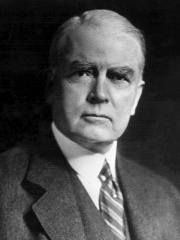
5. John Mott (1865 - 1955)
With an HPI of 60.69, John Mott is the 5th most famous American Religious Figure. His biography has been translated into 51 different languages.
John Raleigh Mott (May 25, 1865 – January 31, 1955) was an evangelist and long-serving leader of the Young Men's Christian Association (YMCA) and the World Student Christian Federation (WSCF). He received the Nobel Peace Prize in 1946 for his work in establishing and strengthening international Protestant Christian student organizations that worked to promote peace. He shared the prize with Emily Balch. From 1895 until 1920 Mott was the General Secretary of the WSCF. Intimately involved in the formation of the World Council of Churches in 1948, that body elected him as a lifelong honorary President. He helped found the World Student Christian Federation in 1895, the 1910 World Missionary Conference and the World Council of Churches in 1948. His best-known book, The Evangelization of the World in this Generation, became a missionary slogan in the early 20th century.

6. William Miller (1782 - 1849)
With an HPI of 60.21, William Miller is the 6th most famous American Religious Figure. His biography has been translated into 28 different languages.
William Miller (February 15, 1782 – December 20, 1849) was an American clergyman who is credited with beginning the mid-19th-century North American religious movement known as Millerism. After his proclamation of the Second Coming did not occur as expected in the 1840s, new heirs of his message emerged, including the Advent Christians (1860), the Seventh-day Adventists (1863) and other Adventist movements.

7. Rose Kennedy (1890 - 1995)
With an HPI of 60.11, Rose Kennedy is the 7th most famous American Religious Figure. Her biography has been translated into 30 different languages.
Rose Elizabeth Fitzgerald Kennedy (July 22, 1890 – January 22, 1995) was an American philanthropist, socialite, and matriarch of the Kennedy family. She was deeply embedded in the "lace curtain" Irish-American community in Boston. Her father, John F. Fitzgerald, served in the Massachusetts State Senate (1892–1894), in the U.S. House of Representatives (1895–1901, 1919), and as Mayor of Boston (1906–1908, 1910–1914). Her husband, Joseph P. Kennedy Sr., chaired the U.S. Securities and Exchange Commission (1934–1935) and the U.S. Maritime Commission (1937–1938), and served as United States Ambassador to the United Kingdom (1938–1940). Their nine children included United States President John F. Kennedy, U.S. Senator Robert F. Kennedy of New York, U.S. Senator Ted Kennedy of Massachusetts, Special Olympics founder Eunice Kennedy Shriver, and U.S. Ambassador to Ireland Jean Kennedy Smith. In 1951, Rose Kennedy was ennobled by Pope Pius XII, becoming the sixth American woman to be granted the rank of Papal countess.

8. Joseph Franklin Rutherford (1869 - 1942)
With an HPI of 59.14, Joseph Franklin Rutherford is the 8th most famous American Religious Figure. His biography has been translated into 29 different languages.
Joseph Franklin Rutherford (November 8, 1869 – January 8, 1942), also known as Judge Rutherford, was an American religious leader and the second president of the incorporated Watch Tower Bible and Tract Society of Pennsylvania. He played a primary role in the organization and doctrinal development of Jehovah's Witnesses, which emerged from the Bible Student movement established by Charles Taze Russell. Rutherford began a career in law, working as a court stenographer, trial lawyer and prosecutor. He became a special judge in the 14th Judicial District of Missouri at some time after 1895. He developed an interest in the doctrines of Watch Tower Society president Charles Taze Russell, which led to his joining the Bible Student movement, and he was baptized in 1906. He was appointed the legal counsel for the Watch Tower Society in 1907, as well as a traveling representative prior to his election as president in 1917. His early presidency was marked by a dispute with the Society's board of directors, in which four of its seven members accused him of autocratic behavior and sought to reduce his powers. The resulting leadership crisis divided the Bible Student community and contributed to the loss of one-seventh of adherents by 1919 and thousands more by 1931. Rutherford and seven other Watch Tower executives were imprisoned in 1918 after charges were laid over the publication of The Finished Mystery, a book deemed seditious for its opposition to World War I.Rutherford introduced many organizational and doctrinal changes that helped shape the current beliefs and practices of Jehovah's Witnesses. He imposed a centralized administrative structure on the worldwide Bible Student movement, which he later called a theocracy, requiring all adherents to distribute literature via door to door preaching and to provide regular reports of their preaching activity. He also instituted training programs for public speaking as part of their weekly meetings for worship. He established 1914 as the date of Christ's invisible return, asserted that Christ died on a tree rather than a cross, formulated the current Witness concept of Armageddon as God's war on the wicked, and reinforced the belief that the start of Christ's millennial reign was imminent. He condemned the observance of traditional celebrations such as Christmas and birthdays, the saluting of national flags and the singing of national anthems. He introduced the name "Jehovah's witnesses" in 1931 and the term "Kingdom Hall" for houses of worship in 1935.He wrote twenty-one books and was credited by the Society in 1942 with the distribution of almost 400 million books and booklets. Despite significant decreases during the 1920s, overall membership increased more than sixfold by the end of Rutherford's 25 years as president.

9. Pat Garrett (1850 - 1908)
With an HPI of 58.35, Pat Garrett is the 9th most famous American Religious Figure. His biography has been translated into 23 different languages.
Patrick Floyd Jarvis Garrett (June 5, 1850 – February 29, 1908) was an American Old West lawman, bartender and customs agent known for killing Billy the Kid. He was the sheriff of Lincoln County, New Mexico, as well as Doña Ana County, New Mexico.
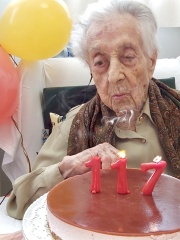
10. Maria Branyas (b. 1907)
With an HPI of 58.08, Maria Branyas is the 10th most famous American Religious Figure. Her biography has been translated into 28 different languages.
Maria Branyas Morera (Catalan: [məˈɾiə ˈβɾaɲəs]; born 4 March 1907) is an American-born Spanish supercentenarian who, at the age of 117 years, 42 days, has been the world's oldest verified living person since the death of Lucile Randon (1904–2023) on 17 January 2023. She is also the last verified living person born in 1907.
People
Pantheon has 125 people classified as American religious figures born between 1585 and 1984. Of these 125, 37 (29.60%) of them are still alive today. The most famous living American religious figures include Maria Branyas, Raymond Leo Burke, and James Michael Harvey. The most famous deceased American religious figures include Joseph Smith, Brigham Young, and Charles Taze Russell. As of April 2024, 19 new American religious figures have been added to Pantheon including Maria Branyas, William J. Seymour, and Lucian Pulvermacher.
Living American Religious Figures
Go to all RankingsMaria Branyas
1907 - Present
HPI: 58.08
Raymond Leo Burke
1948 - Present
HPI: 56.24
James Michael Harvey
1949 - Present
HPI: 51.76
Yusuf Estes
1944 - Present
HPI: 51.33
Theodore Edgar McCarrick
1930 - Present
HPI: 50.80
Edwin Frederick O'Brien
1939 - Present
HPI: 49.50
Seán Patrick O'Malley
1944 - Present
HPI: 47.55
John F. MacArthur
1939 - Present
HPI: 47.53
Donald Wuerl
1940 - Present
HPI: 46.31
Adam Maida
1930 - Present
HPI: 46.29
James Stafford
1932 - Present
HPI: 45.94
Joseph Strickland
1958 - Present
HPI: 45.82
Deceased American Religious Figures
Go to all RankingsJoseph Smith
1805 - 1844
HPI: 79.04
Brigham Young
1801 - 1877
HPI: 72.00
Charles Taze Russell
1852 - 1916
HPI: 65.28
Billy Graham
1918 - 2018
HPI: 65.05
John Mott
1865 - 1955
HPI: 60.69
William Miller
1782 - 1849
HPI: 60.21
Rose Kennedy
1890 - 1995
HPI: 60.11
Joseph Franklin Rutherford
1869 - 1942
HPI: 59.14
Pat Garrett
1850 - 1908
HPI: 58.35
Henry Molaison
1926 - 2008
HPI: 57.98
Lillian Asplund
1906 - 2006
HPI: 57.96
Paul Marcinkus
1922 - 2006
HPI: 57.20
Newly Added American Religious Figures (2024)
Go to all RankingsMaria Branyas
1907 - Present
HPI: 58.08
William J. Seymour
1870 - 1922
HPI: 52.32
Lucian Pulvermacher
1918 - 2009
HPI: 52.21
Tammy Faye Messner
1942 - 2007
HPI: 49.51
C. I. Scofield
1843 - 1921
HPI: 47.79
Joseph Strickland
1958 - Present
HPI: 45.82
Jim Elliot
1927 - 1956
HPI: 45.42
Gintaras Grušas
1961 - Present
HPI: 43.29
David Miscavige
1960 - Present
HPI: 42.19
Peter the Aleut
1800 - 1815
HPI: 42.09
Ezra Taft Benson
1899 - 1994
HPI: 41.61
John Hagee
1940 - Present
HPI: 41.27
Overlapping Lives
Which Religious Figures were alive at the same time? This visualization shows the lifespans of the 25 most globally memorable Religious Figures since 1700.

